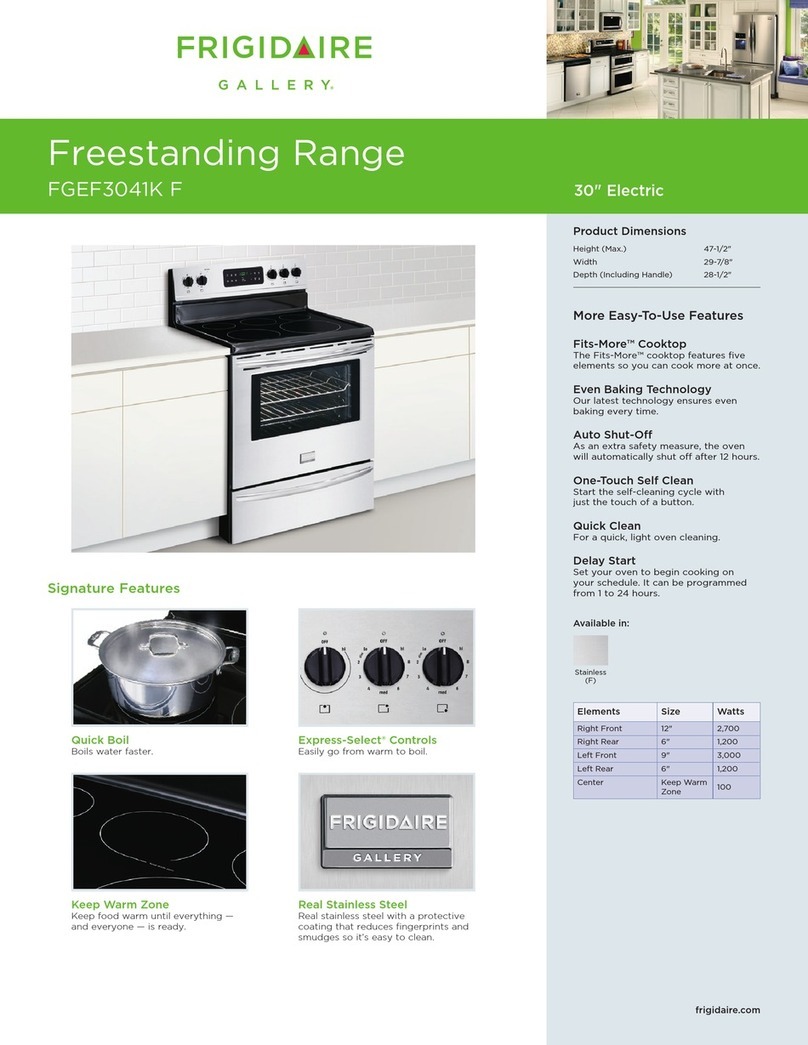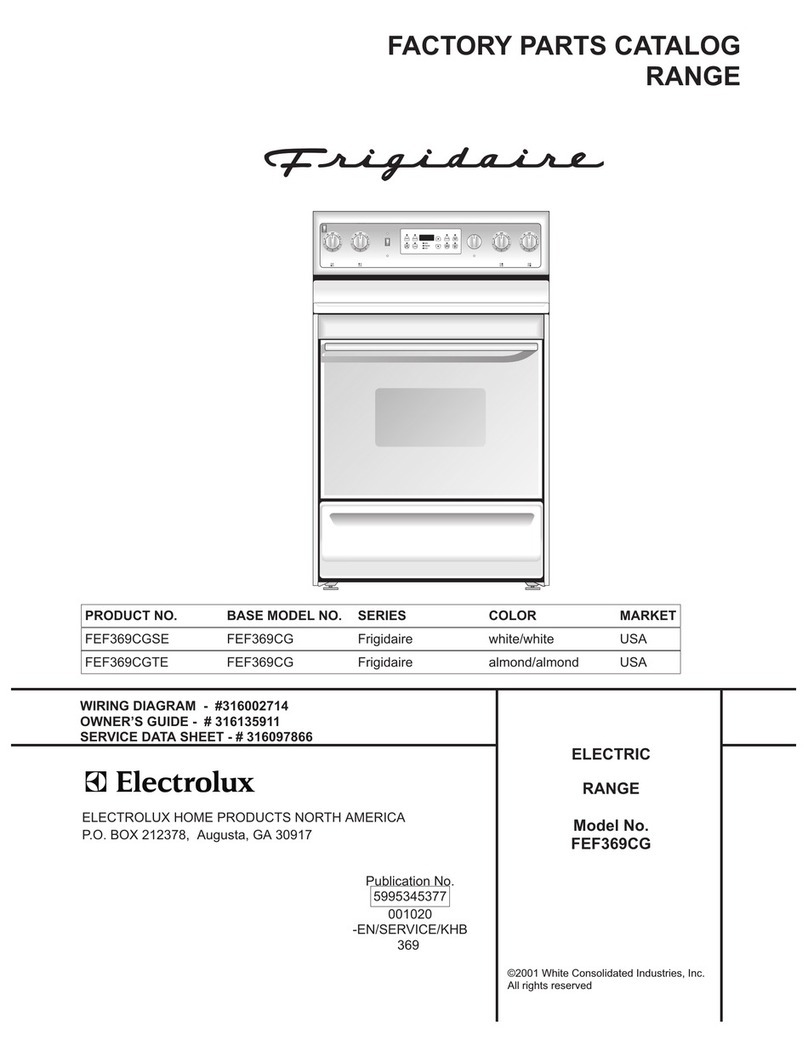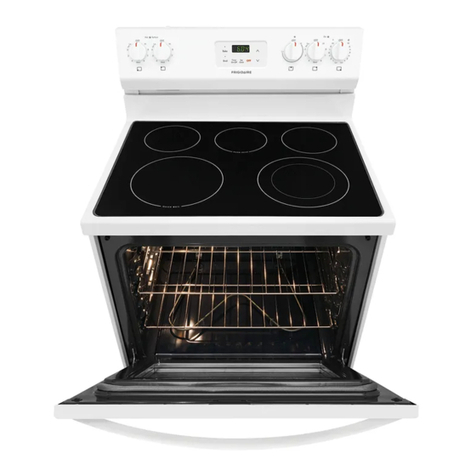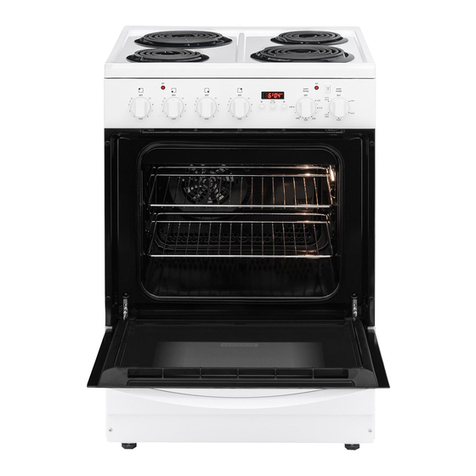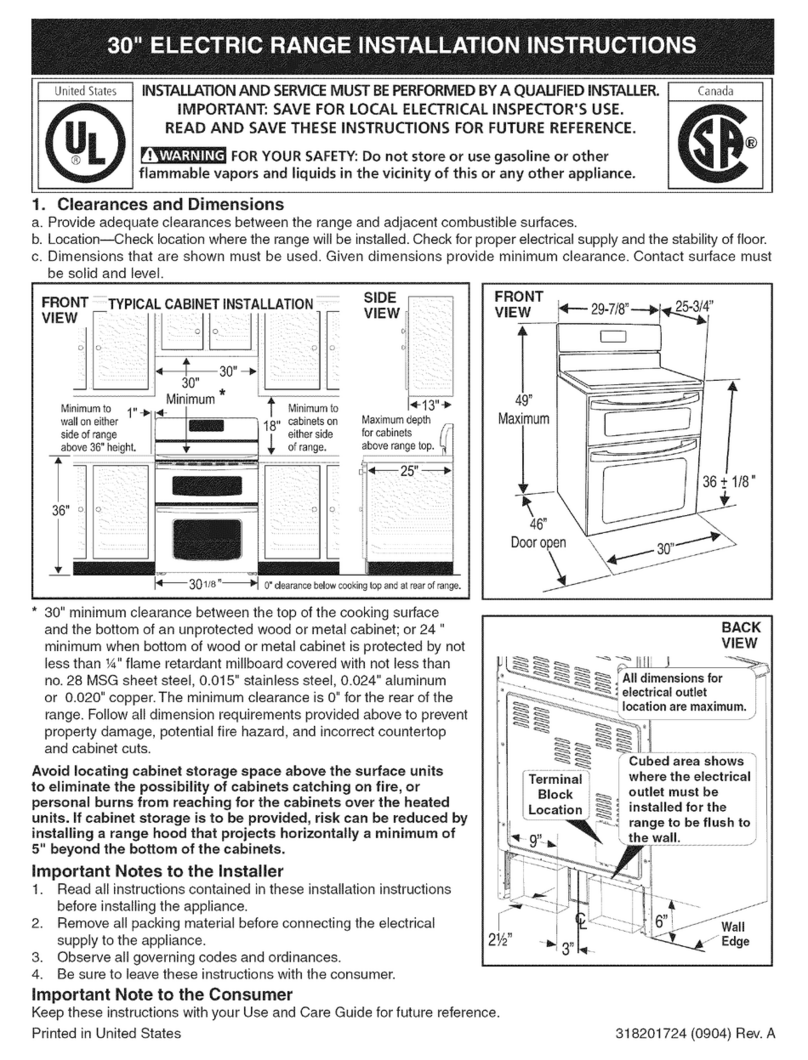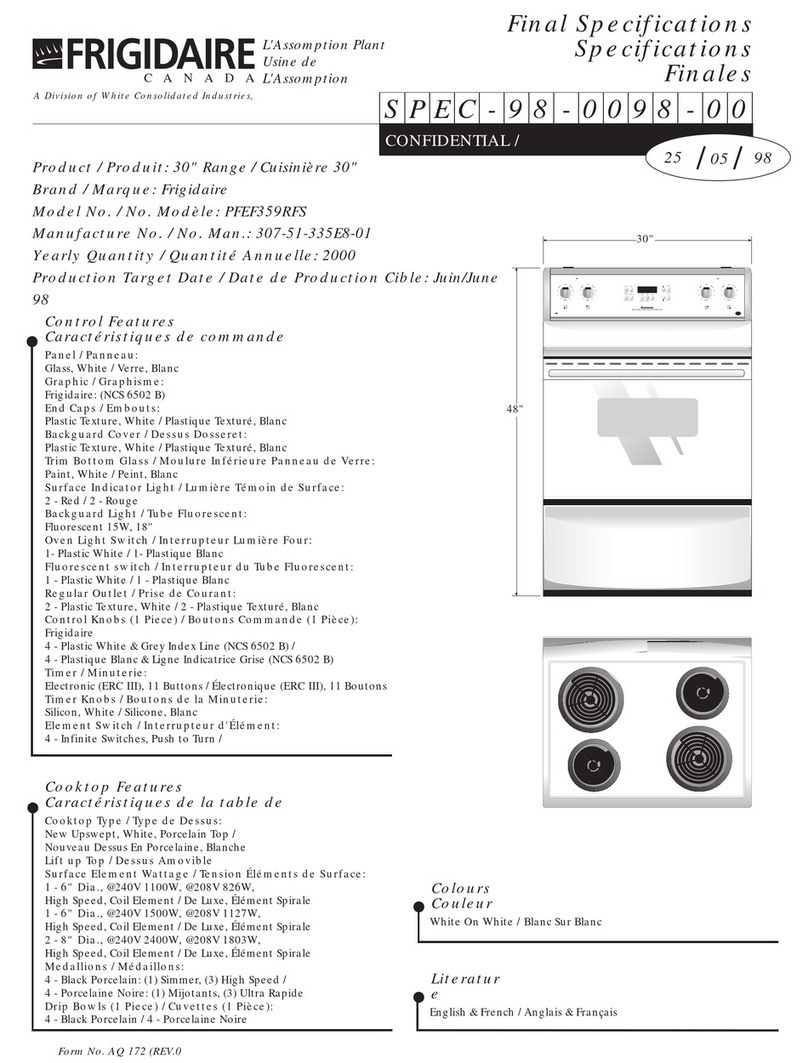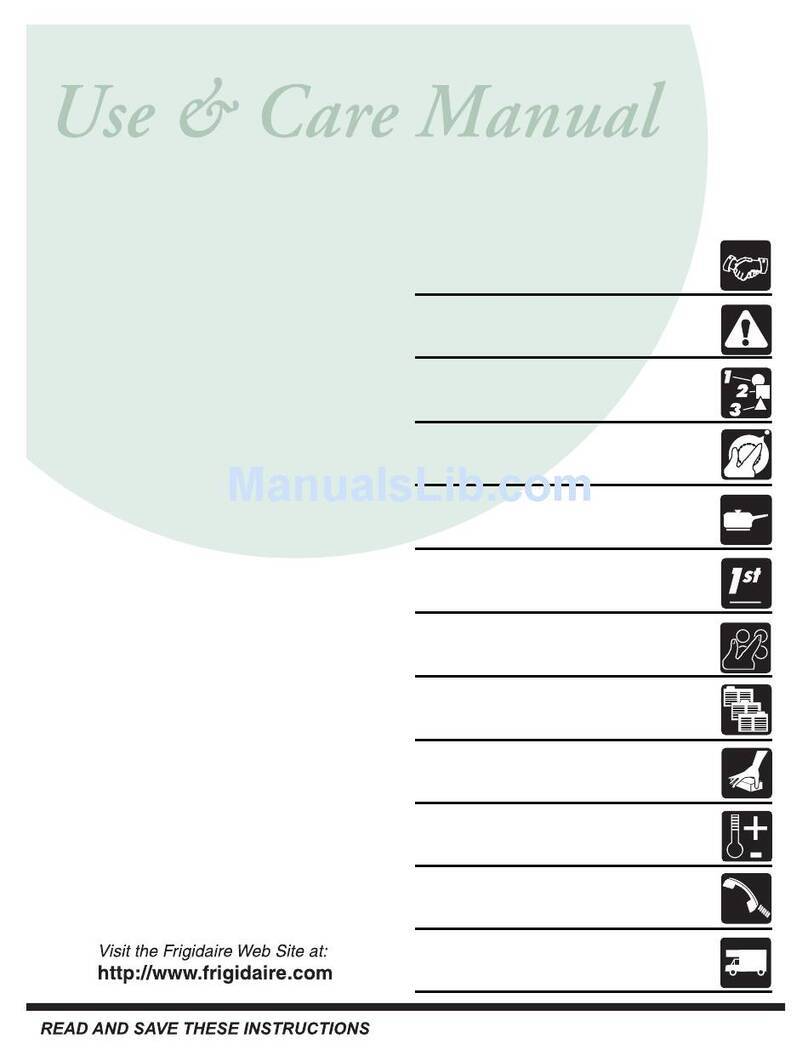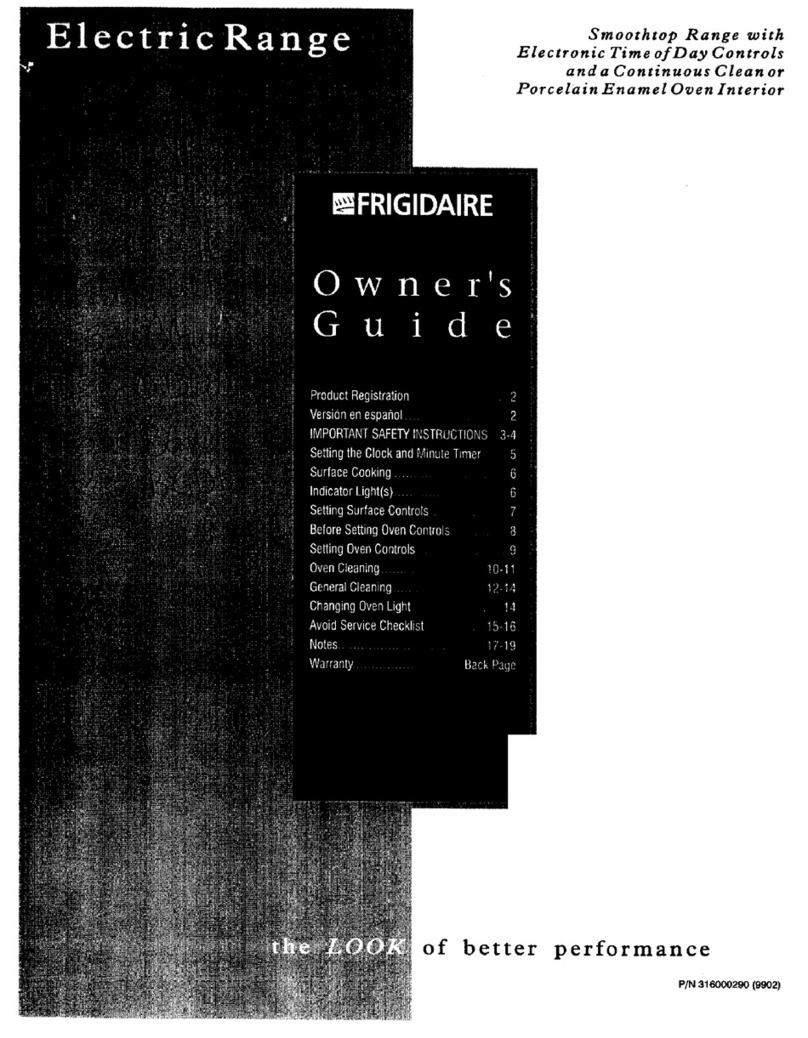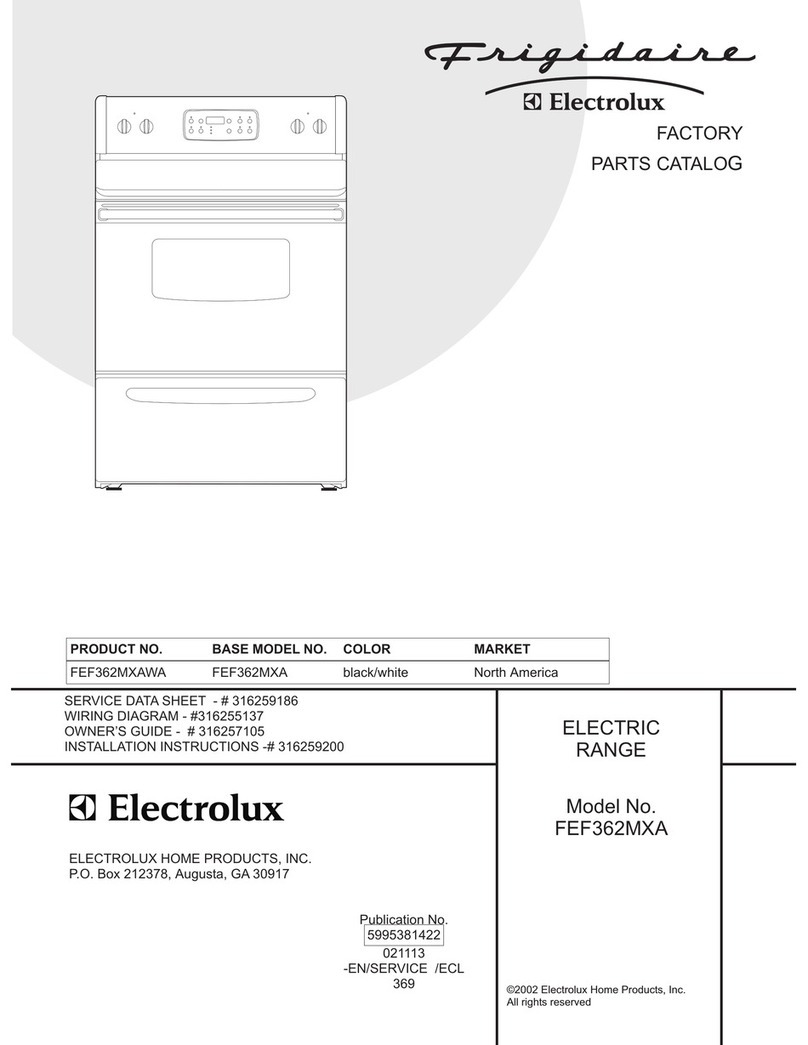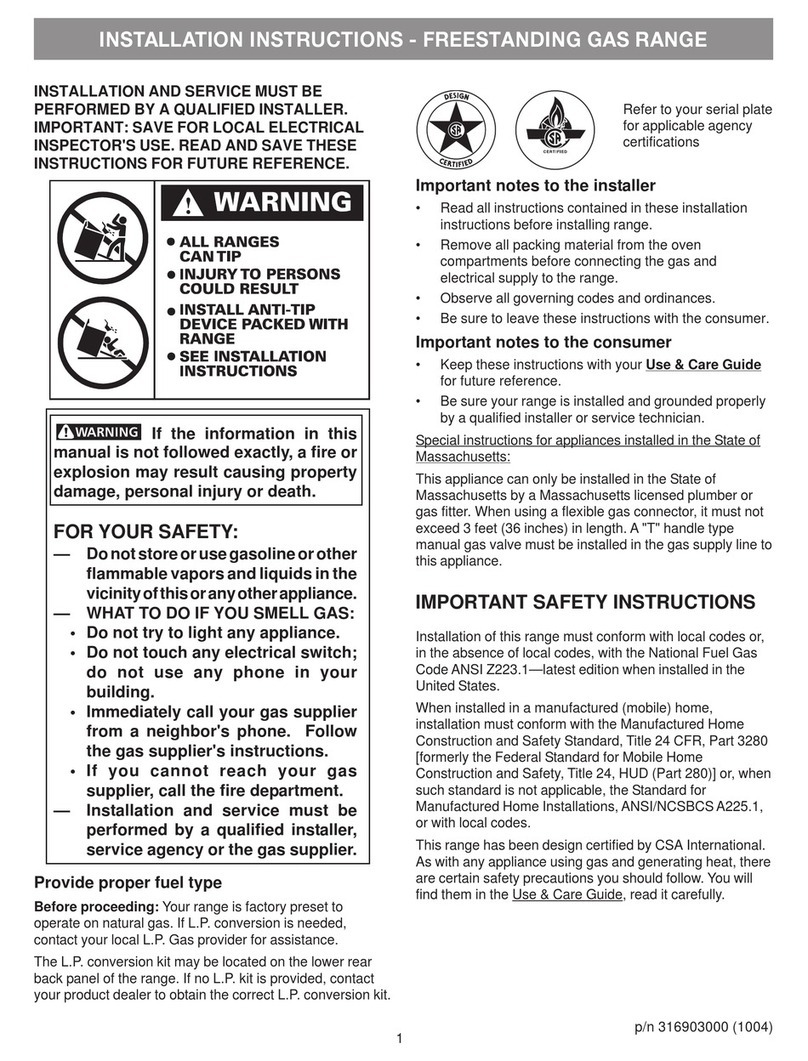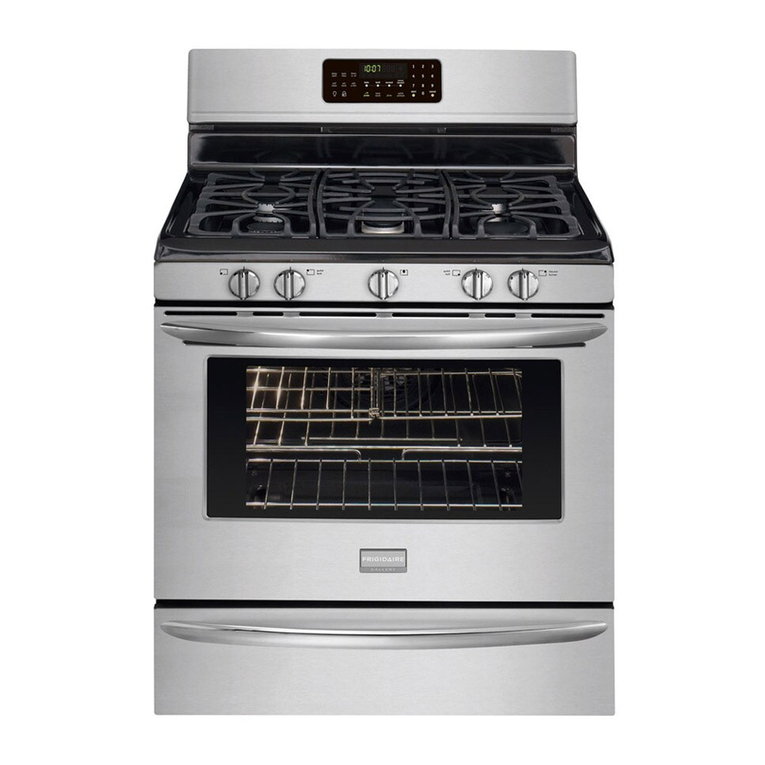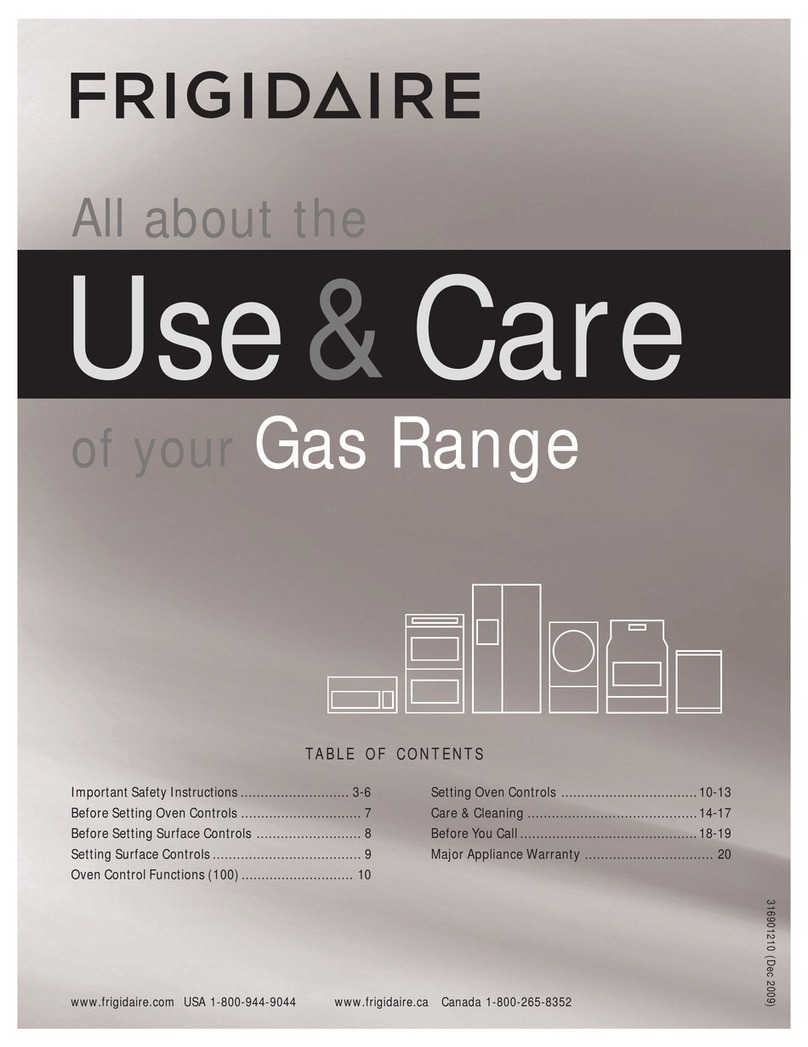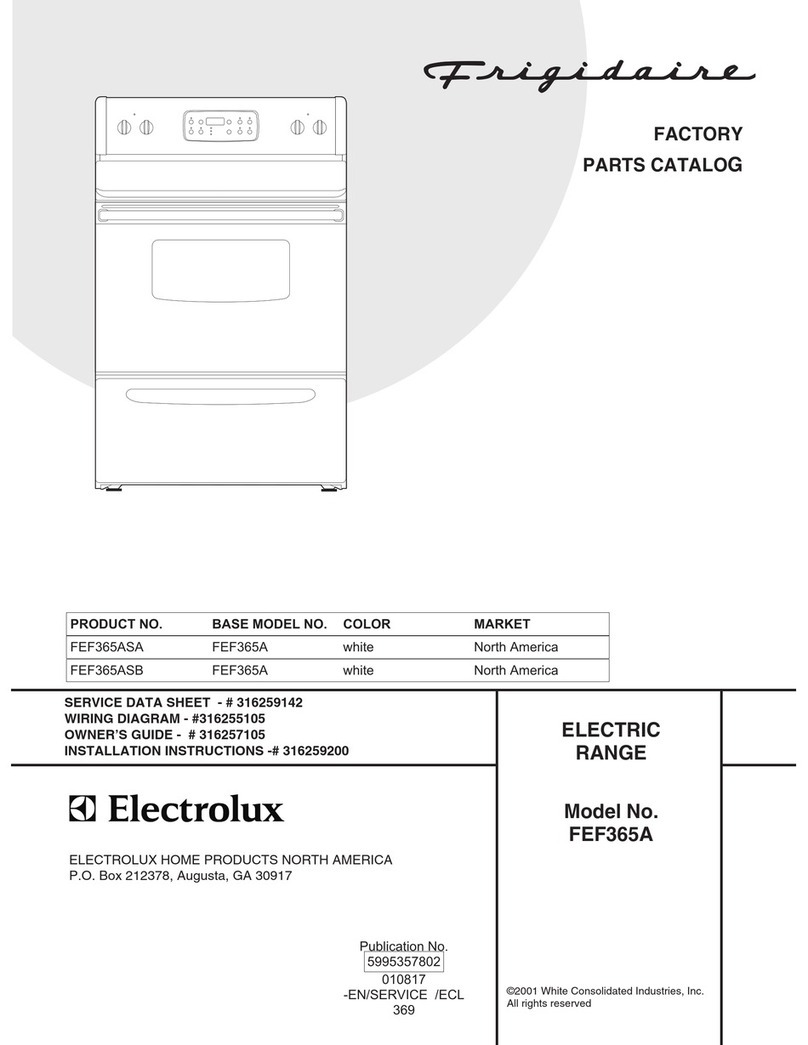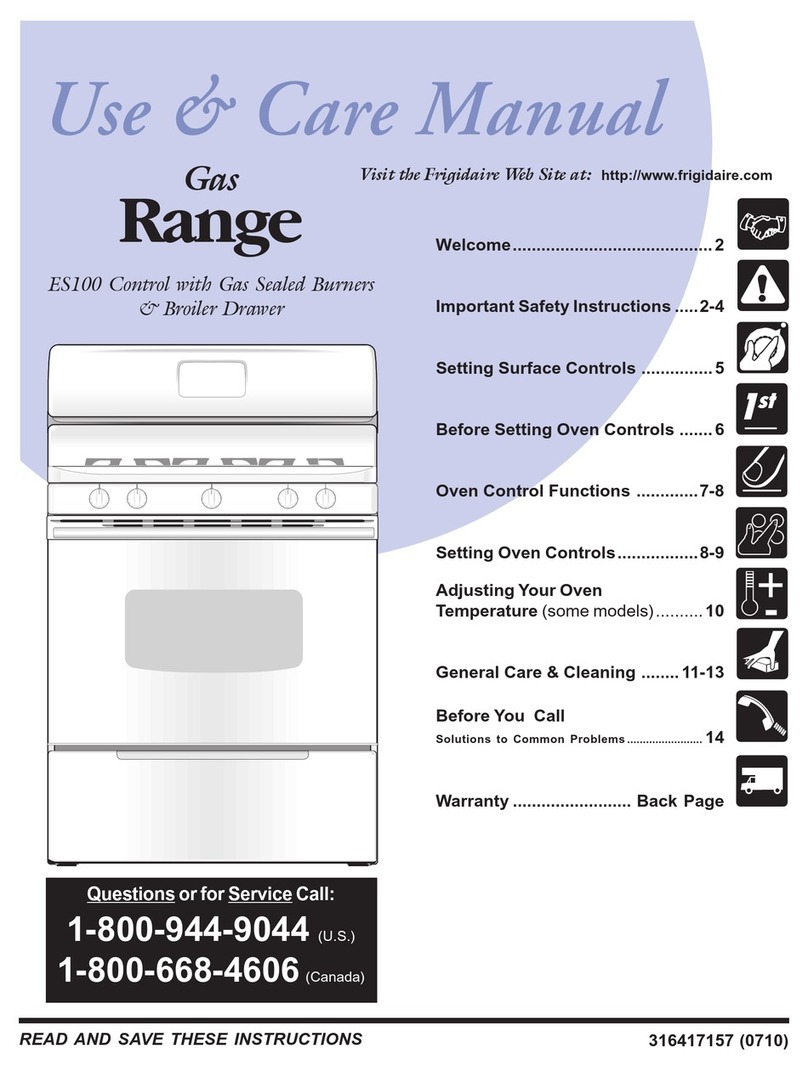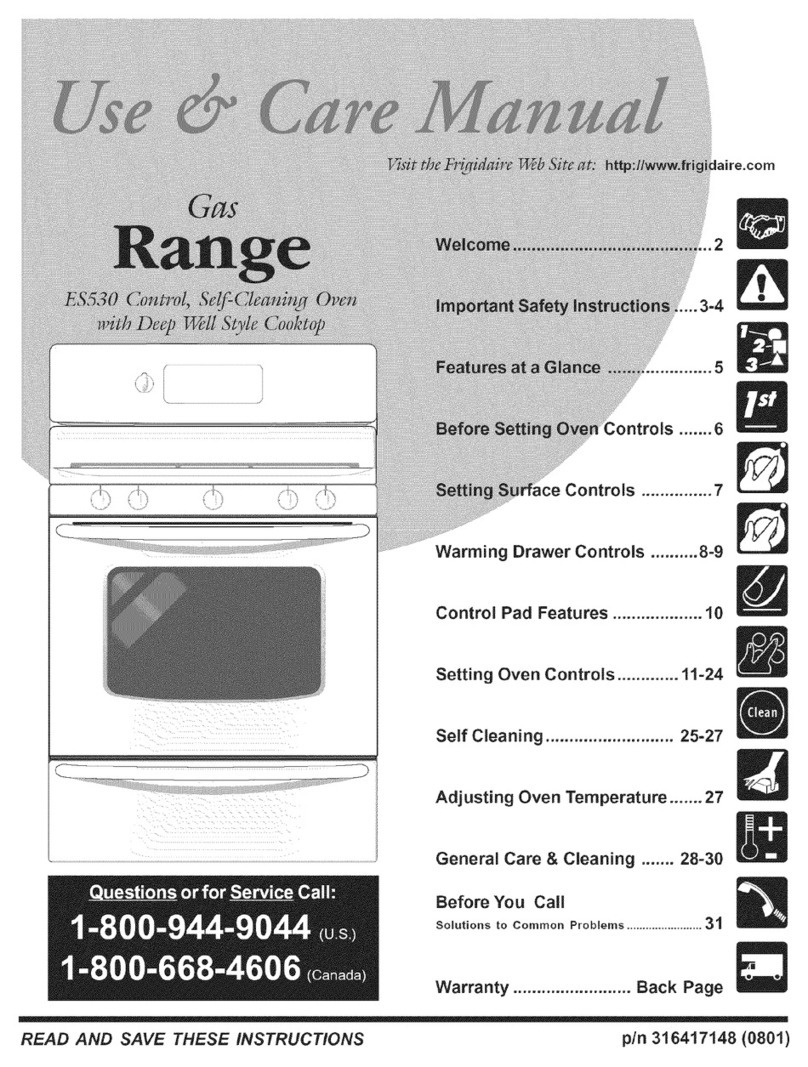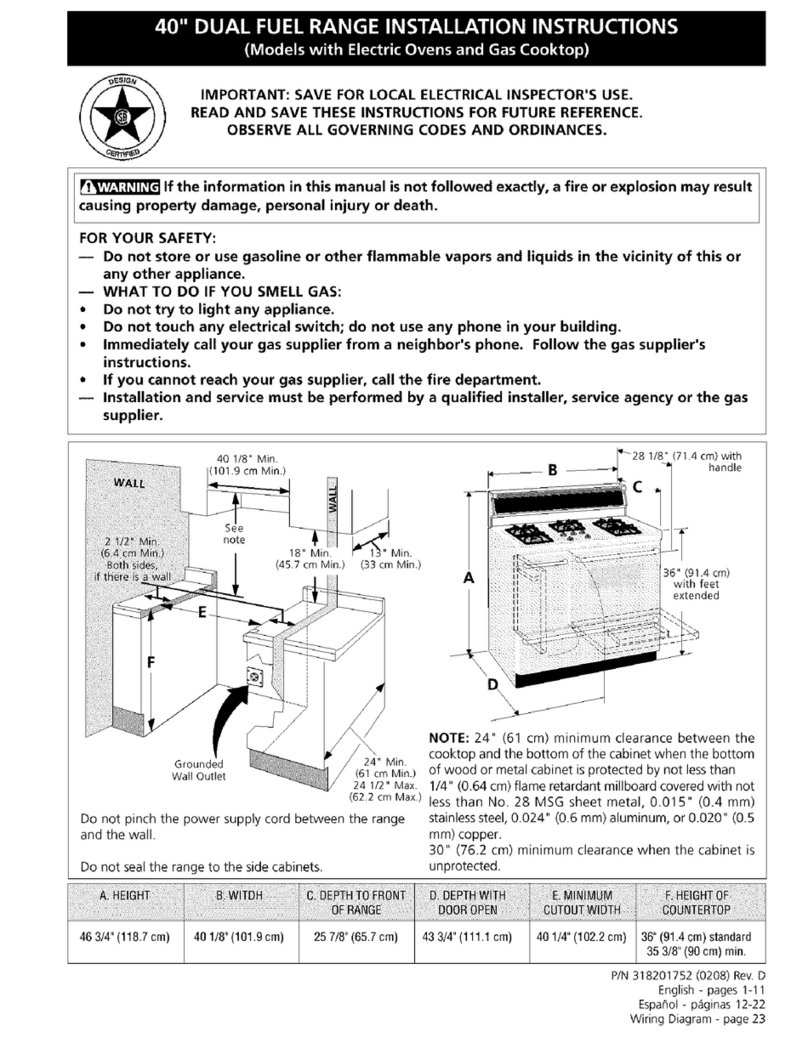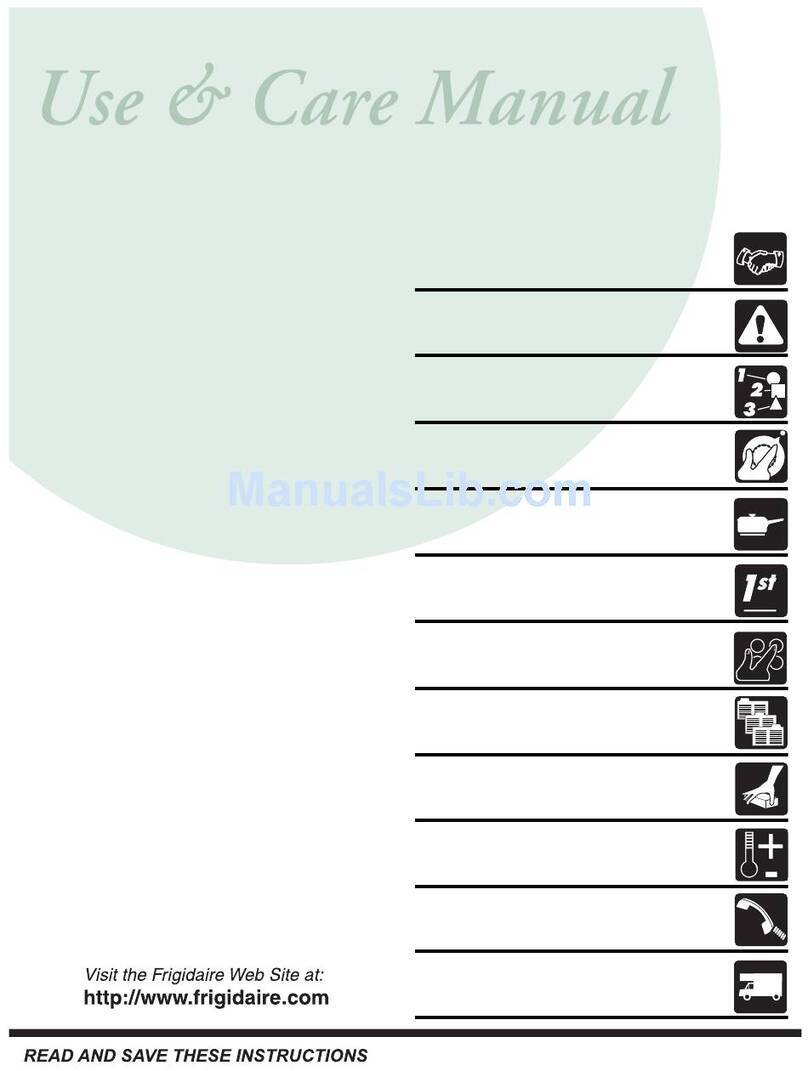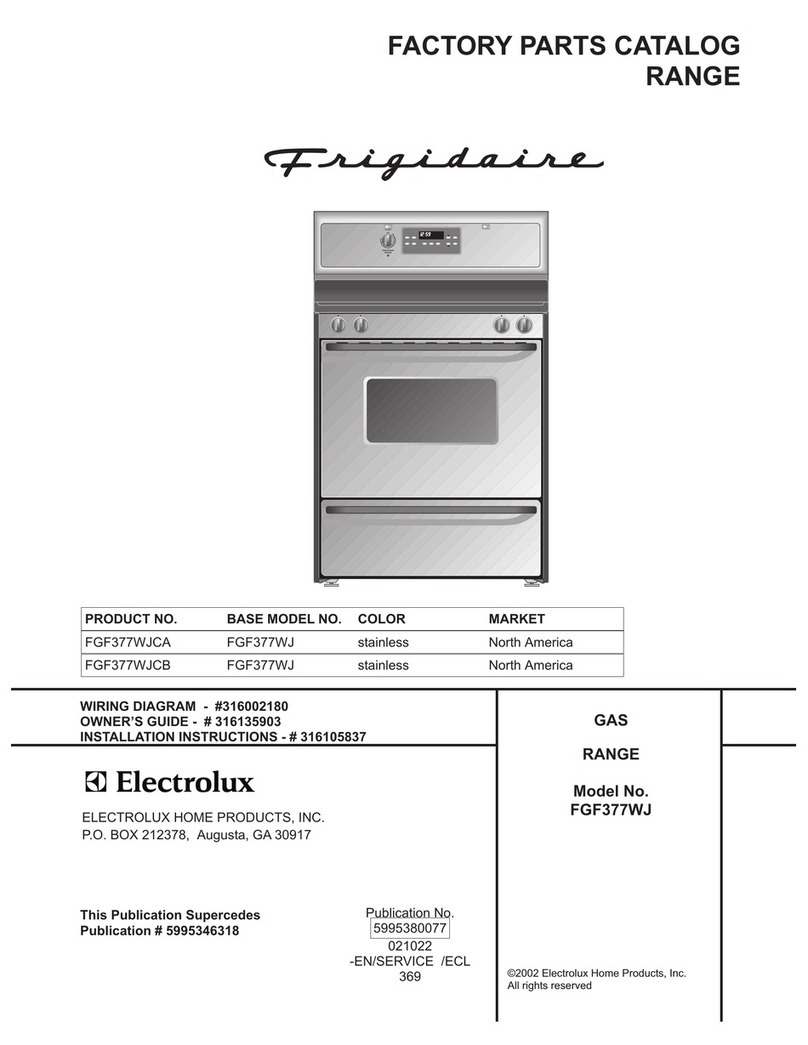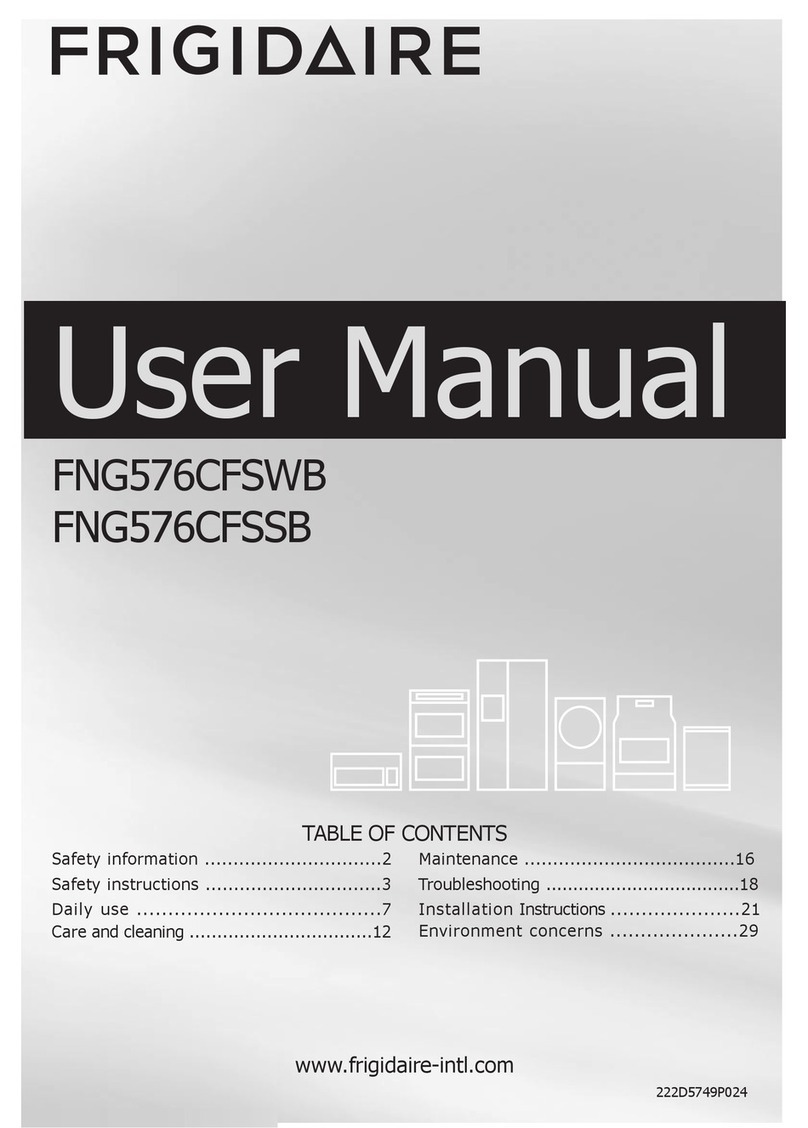
3
IMPORTANT SAFETY INSTRUCTIONS
Read all instructions before using this appliance.
Save these instructions for future reference.
This guide contains important safety symbols and instructions. Please pay attention to these symbols and follow all instructions given.
Here is a brief explanation of the use of these symbols.
This symbol will help alert you to situations that may cause serious bodily harm, death or property damage.
This symbol will help alert you to situations that may cause bodily injury or property damage.
Remove all tape and packaging before using the range.
Destroy the carton and plastic bags after unpacking the range.
Never allow children to play with packaging material.
Proper InstallationBe sure your appliance is properly
installedandgroundedby aqualified technicianin accordance
with the National Electrical Code ANSI/NFPA No. 70 latest
edition and local electrical code requirements. Install only per
installation instructions provided in the literature package for
this range.
Ask your dealer to recommend a qualified technician and an
authorized repair service. Know how to disconnect the power to
the range at the circuit breaker or fuse box in case of an
emergency.
User servicingDo not repair or replace any part of the
appliance unless specifically recommended in the manuals.
All other servicing should be done only by a qualified technician,
This may reduce the risk of personal injury and damage to the
range.
Never modifyor alter theconstruction of arange by removing
leveling legs, panels, wire covers, anti-tip brackets/screws, or
any other part of the product.
Do not store items of interest to children in the
cabinets above a range or on the backguard of a range.
Children climbing on the range to reach items could be seriously
injured.
Never Use Your Appliance for Warming or
Heating the Room.
Storage in or on ApplianceFlammable materials should not
be stored in an oven, warmer drawer, broiler compartment,
near surface units or in the storage drawer. This includes
paper, plastic and cloth items, such as cookbooks, plasticware
and towels, as well as flammable liquids. Do not store explosives,
such as aerosol cans, on or near the range.
Do Not Leave Children AloneChildren should not be left
alone or unattended in the area where appliance is in use.
They should never be allowed to sit or stand on any part of the
appliance.
DO NOT TOUCH SURFACE UNITS, AREAS NEAR THESE UNITS,
HEATING ELEMENTS OR INTERIOR SURFACES OF THE OVEN.
Both surface units and oven heating elements may be hot even
though they are dark in color. Areas near surface units may
become hot enough to cause burns. During and after use, do not
touch, or let clothing or other flammable materials touch these
areas until they have had sufficient time to cool. Among these
areas are the cooktop, surfaces facing the cooktop, the oven
vent openings and surfaces near these openings, oven door and
window.
Wear Proper ApparelLoose-fitting or hanging garments
should never be worn while using the appliance. Do not let
clothing or other flammable materials contact hot surfaces.
Do Not Use Water or Flour on Grease FiresSmother the fire
with a pan lid, or use baking soda, a dry chemical or foam-
type extinguisher.
When heating fat or grease, watch it closely. Fat or grease
may catch fire if allowed to become too hot.
Use Only Dry PotholdersMoist or damp potholders on hot
surfaces may result in burns from steam. Do not let potholders
touch hot heating elements. Do not use a towel or other bulky
cloth instead of a potholder.
Do NotHeat UnopenedFoodContainersBuildup ofpressure
may cause container to burst and result in injury.
Remove the oven door from any unused range if it is to be
stored or discarded.
IMPORTANTDo not attempt to operate the range during a
power failure. If the power fails, always turn off the range. If the
range is not turned off and the power resumes, the range will
begin to operate again. Once the power resumes, reset the clock
and oven function.
All ranges can tip.
Injury to persons could result.
Install anti-tip device packed with range.
See Installation Instructions.
To reduce the risk of tipping,
the range must be secured by properly installed
anti-tip bracket provided with the range. To
check if the bracket is installed properly, visually
check that rear leveling leg is inserted into and
fullysecuredby theanti-tipbracket byremoving
lower panel or storage drawer. For models
with a warmer drawer, grasp the top rear edge
of the range and carefully attempt to tilt it
forward. Refer to the Installation Instructions
for proper anti-tip bracket installation.
Stepping, leaning or sitting on the doors or
drawers of this range can result in serious injuries and also
cause damage to the range. Do not allow children to climb or
play around the range. The weight of a child on an open door may
cause the range to tip, resulting in serious burns or other injury.
Do not use the oven or warmer drawer for
storage.
